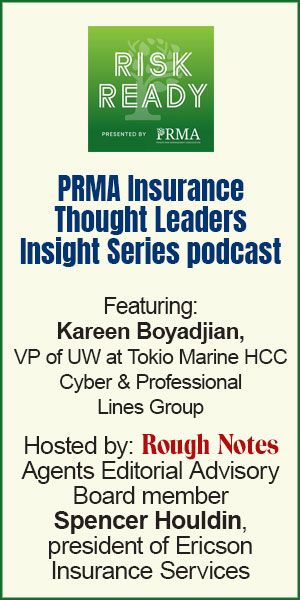Factors to consider while proactively
and strategically planning mitigation for
losses attributable to escalating property risks
By Jeffrey C. Terry and Jason Trahan
Catastrophic risk models are evolving rapidly. Such disastrous evidence manifested with the $50 billion-plus Los Angeles area wildfires in January 2025. Many insurance carriers and reinsurers did not contemplate that region as an extremely high wildfire zone. Unpredictability exists. Organizations of all sizes, in every business sector and geographic region, have been overwhelmed by extraordinary loss events once never considered, as catastrophic weather events become the norm, not the exception.
While some weather events are more predictable—hurricanes, for example—secondary perils like floods, wildfires and drought are often more frequent and less predictable. But they all cost and cost big. In 2024, according to data from the National Oceanic and Atmospheric Administration’s (NOAA) National Centers for Environmental Information, 27 individual weather-related disasters in the U.S. each wreaked at least $1 billion in damages.
In 2024, …
27 individual
weather-related
disasters in the U.S.
each wreaked at least $1 billion
in damages.

Remain relevant; it is critical to monitor and
respond to circumstances likely to influence
valuations. The impact of tariffs on supply chain
costs changes is one such consideration.
Prudent risk management engages clients on how to not merely contemplate these losses but to proactively and strategically plan to protect property assets, human lives, and business continuity against the risks. Brokers have a professional duty as trusted partners to clients, working diligently with insurers and underwriters, structuring insurance programs and policy coverages, terms and conditions that most comprehensively protect what matters most to an organization.
In support of risk mitigation, clients should be properly guided on effective disaster recovery planning and business continuity strategies. The process should encapsulate pre-loss planning, loss management during the crises, and post-loss mitigation and restoration protocols.
It takes preparedness to ensure insurability
After 27 consecutive quarters of increases, property insurance rates have generally stabilized. Increased capacity from existing carriers has begun to outpace demand; single carrier and shared and layered programs have pushed rates downward. The reinsurance market has stabilized, and there are pockets of overall softening in certain segments of the marketplace.
Even so, the market is still guarded, given the volatility and uncertainty of weather and climate events. The underwriting community places a premium on preparedness for property risks. Underwriting has become more disciplined, and to broaden the appetite of insurability it is imperative to ensure that risks are properly protected and that proper loss prevention protocols are in order.
Consider these critical facets in which heightened risk practices will pay dividends.
Valuations—Make corrections now. Property valuations have been a problem in recent years. Between record inflation and under-reported values, replacement costs have jumped 30% to 40% on average. Reconstruction costs have escalated, placing a far greater spotlight on valuations, particularly significantly undervalued assets.
There has been a reconciliation of valuations, and in many cases, an abrupt reconciliation. Improper valuations and limited policy terms and conditions, at a time of loss, would likely not be an enjoyable scenario for a client nor its broker.
Take pro-active measures to address disparities in values. Improved valuation tools have made the process more effective and efficient.
Deliver an accurate and comprehensive Statement of Values (SOV) to the underwriting community. Provide risk narratives and loss summary reports and descriptions of large losses. Incorporate engineering reports and maintenance schedules. Illustrate capital improvements that influence risk control.
Remain relevant; it is critical to monitor and respond to circumstances likely to influence valuations. The impact of tariffs on supply chain costs changes is one such consideration.
Disaster recovery plans—Manage cascading effects of catastrophes. The optimal recovery commences with property insurance program design and layers through to pre-loss, loss mitigation and post-loss restoration. Brokers should engage in advisory sessions with clients to review coverages, endorsements, valuation provisions and policy limitation and exclusions. Negotiate out limitations and exclusions at the policy marketing engagement with carriers.
Additionally, brokers should incorporate advanced risk modeling and predictive analytics into their planning with clients. This will enable a better understanding and anticipation of potential losses.
A comprehensive disaster recovery plan is imperative for loss mitigation and timely restoration. Utilize expert risk consultants for planning and preparation. Have service providers—remediation, restoration, contractors and other providers—connected into a predetermined, preferred network that will engage immediately in the event of a catastrophic loss.
Designate and have other experts on standby: specialized claims adjusters familiar with the business immediately available to assess the impact of the event, a claims preparation professional to ensure that the loss is properly documented to insurers, and a Federal Emergency Management Agency (FEMA) specialist.
From reactive to proactive
Disasters may be unavoidable, but their impact can be mitigated. Through risk modeling, accurate valuations and strategic planning, property stakeholders can safeguard their investments, maintain business stability and protect their employees.
The authors

Jeff Terry. executive vice president and managing director at Hub International, co-leads HUB’s Renewable Energy specialty unit and is managing director of Alternative Risk Solutions. Jeff serves on several insurance company broker advisory councils and is a member of the Advisory Council for the University of Southern California Risk Management Program.

Jason Trahan is the commercial insurance claims practice leader for Disaster Recovery Services, LLC (DRS), a division of Specialty Program Group, where he specializes in supervising and guiding professionals to provide a turnkey recovery solution for claims consulting, disaster restoration and rebuild, and debris removal after a loss event.





